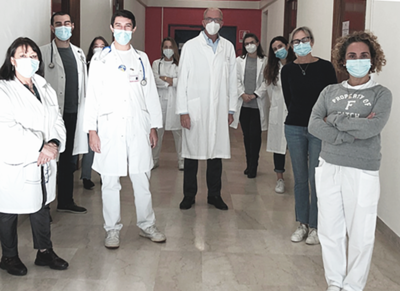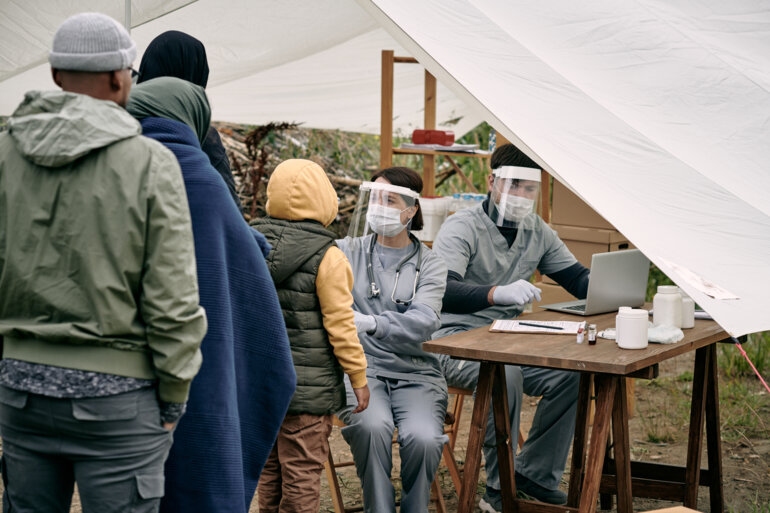In situations where the science is uncertain, there is a need to go back to the core of what evidence-based medicine really is. Prof. Alberto Sobrero, Ospedale San Martino in Genoa, Italy, is firmly convinced of this after witnessing a number of precautionary adjustments in cancer management being implemented in his clinic. He believes it is time for an initial assessment of the changes in patient management – in both curative and palliative settings – which have been leading the way since the pandemic outbreak and could serve to refine therapeutic approaches to the benefit of patients.
Why do you suggest that “going back to the core of evidence-based medicine” is the way forward in a health crisis like the one we are experiencing?
The pandemic has forced us to rethink treatment modes to minimise the risks to patients, and to do this we have had to rely not only on the scientific evidence, which was and still is lacking, but also on the clinical judgement of the treating physician and the preferences and values of the patient. These last two aspects, too often forgotten in the past, have gained importance again because of the scientific uncertainty that has defined this evolving health crisis. Between the obligation to provide the most effective treatment available to individual patients, and the imperative of reducing the number of people in our hospital and the amount of contact between them, we faced an ethical conflict that could not easily be resolved just by referring to oncology guidelines. It is only by taking our own clinical judgement and the preferences of our patients into account in the decision-making process that we have been able to choose seemingly “suboptimal” options which actually served our patients’ interests better.
It is only by taking our own clinical judgement and the preferences of our patients into account in the decision-making process that we have been able to choose seemingly “suboptimal” options which actually served our patients’ interests better.
Treatment schedules and doses have been adapted to reduce hospital visits. Can we start to draw conclusions from these attempts?
These adjustments have primarily concerned patients for whom the goal of treatment was palliation: to extend their life by anywhere from six to 20 months while lessening the burden of their disease. Whenever we were not sure continuous treatment would make a difference compared to intermittent treatment, for instance, we opted for the latter. This could be considered suboptimal management, but I would recommend it because patients risk losing a month or two in survival at most – nothing compared to the severe risk of complications from COVID-19 they would otherwise face. Weighing these risks against the expected benefits may also lead us to reassess the utility of certain maintenance therapies, differentiating between oral agents, which may be safely administered at home, and intravenous drugs, which even in low doses require the patient to come to the hospital to receive treatment. The patient benefit compared to stopping all treatments after the initial regimen of chemotherapy is not always clear.
To a lesser extent, this reasoning holds for adjuvant therapy in the curative setting, too. A patient with stage III colon cancer, for example, stands to gain just 0.8 percent in terms of cure rate by extending chemotherapy from three to six months. Given the fact that they already have a 50 percent chance of cure with surgery and gain an additional 20 percent with three months of chemo, does it really make sense to double the length of treatment for a fraction of one percent in additional benefit? Again, we need to introduce our clinical judgement into these decisions and discuss the information with patients to ensure we do not deprive them of something that is essential in their eyes. Most of the time, they agree that three months are enough.
Could this lead us to change the way we think about the trade-off between benefit and toxicity?
Absolutely. A decade ago, my answer to this question would have been different because back then advancements were measured in terms of one or two months of life gained in median survival. Under those conditions, we were blind to the fact that improvements obtained by increasing treatment duration or doses were really incremental gains. As precision medicine and immuno-oncology have changed the unit of measure thanks to gains of 10 to 20 months in median survival, and now with the added threat of exposure to COVID-19, we need to seriously reconsider whether the risks associated with prolonging therapy at high doses are worth the marginal expected benefit.
Would you consider adopting some of these approaches beyond the context of the pandemic?
Yes, in fact I already applied this type of thinking before the COVID-19 outbreak – especially when considering therapy for metastatic cancer. In an individual who is elderly, with a medical history indicating that the disease is not aggressive, for example, I would suggest that they wait two or three months and come back with an ultrasound to evaluate their metastatic lesion. Only then, if the disease progresses, would I propose that we start treatment. When you use your clinical judgement to identify cases in which these approaches would be appropriate, they may better satisfy patients’ expectations without significantly compromising clinical outcomes.
Do you believe there have been mistakes from which we should learn going forward?
Restricting patients’ access to the hospital too much has occasionally been counterproductive. For instance, I conducted a visit over the phone with a patient who had advanced disease that did not seem aggressive, for whom I had recommended that we pause treatment: the patient reported that nothing major had changed, except for perhaps feeling a bit weaker, so I confirmed that we would wait and re-evaluate the situation two months later. This patient eventually came back for a physical examination upon which I diagnosed ascites, a build-up of fluid in the abdomen suggesting disease progression. If I had seen the patient earlier, we may have been able to start treatment under better conditions – though there is no way to know for sure this would have changed the outcome. But as we now have proof that personal protective equipment (PPE) and other preventive measures are very effective at limiting virus transmission in the hospital setting, we should no longer unduly postpone our patients’ in-person visits: waiting for them to become symptomatic is too late.









